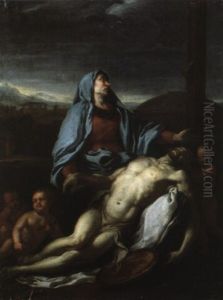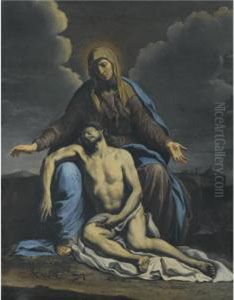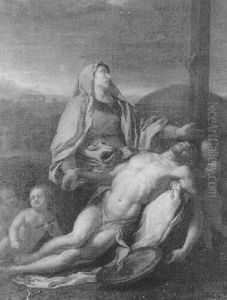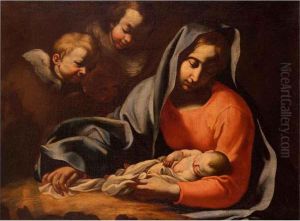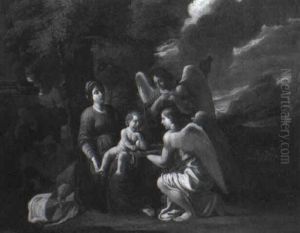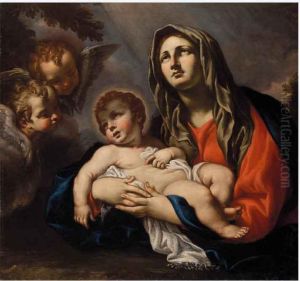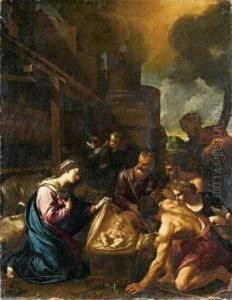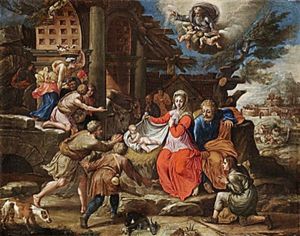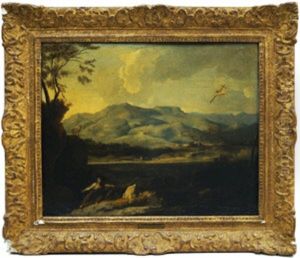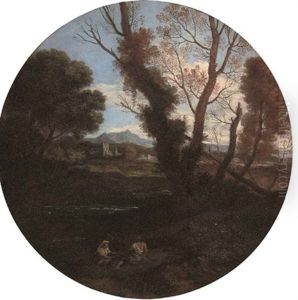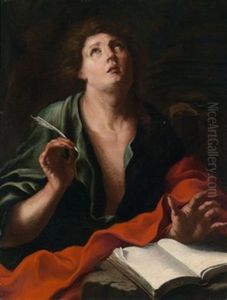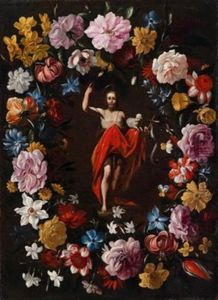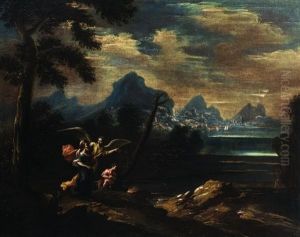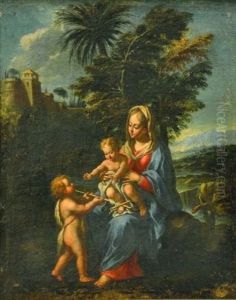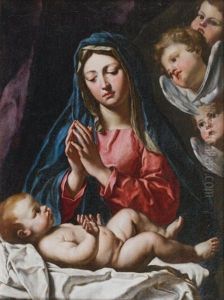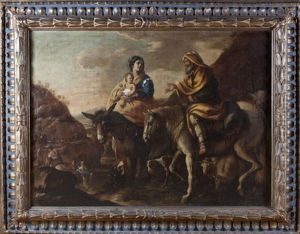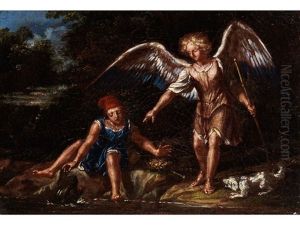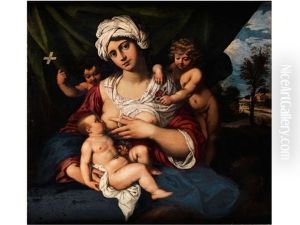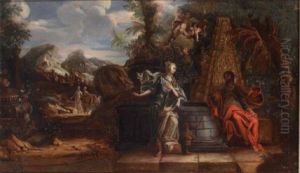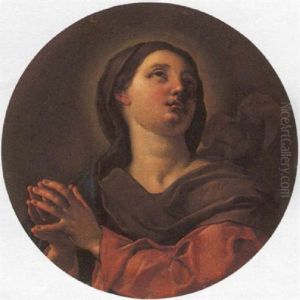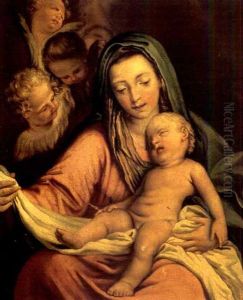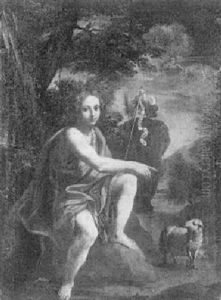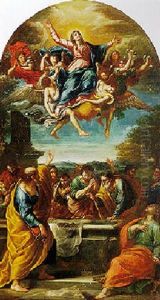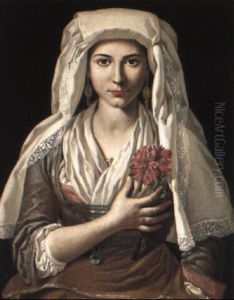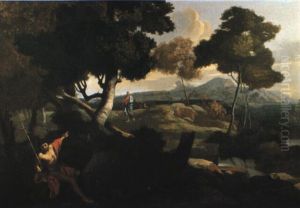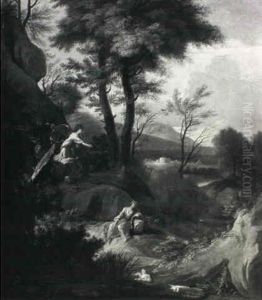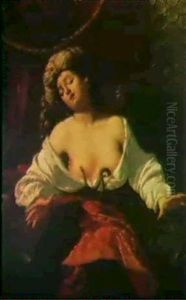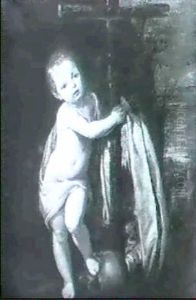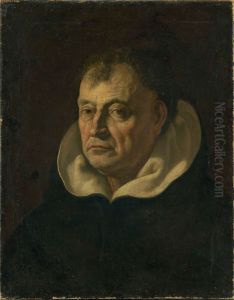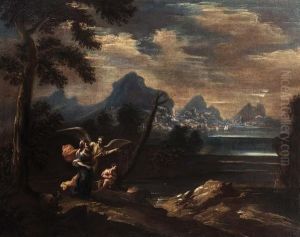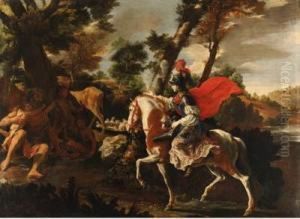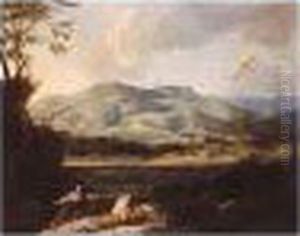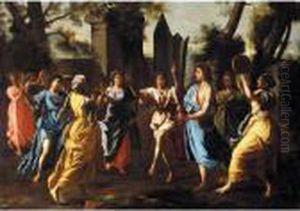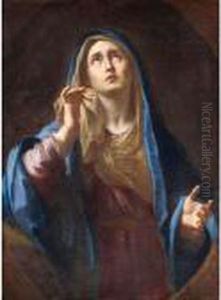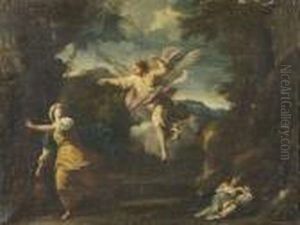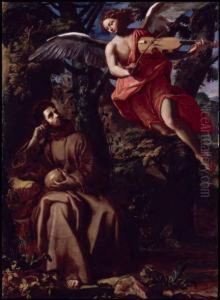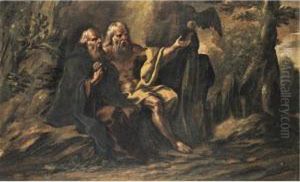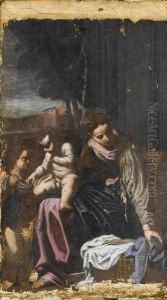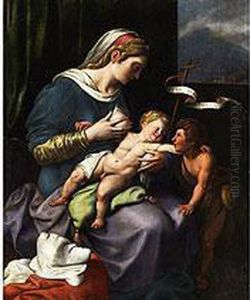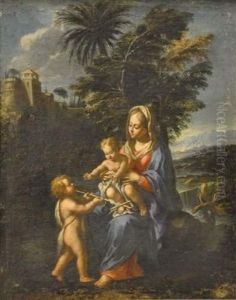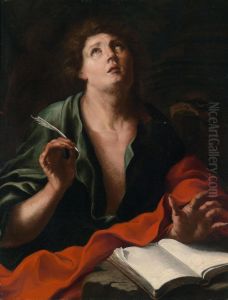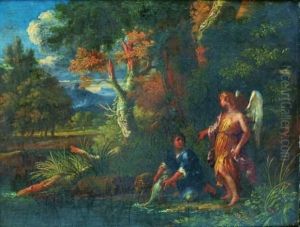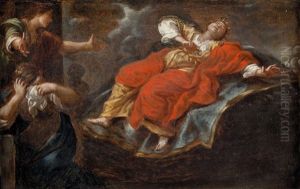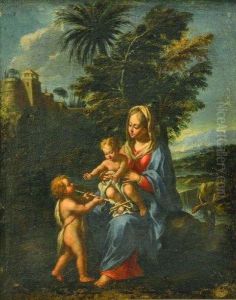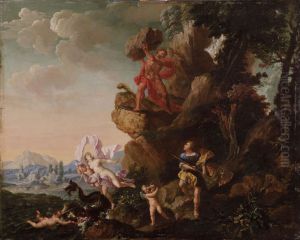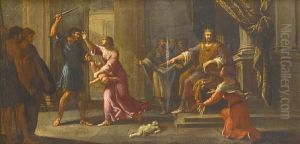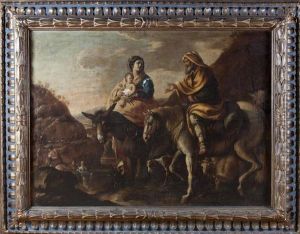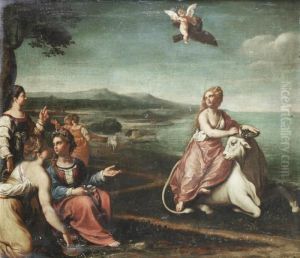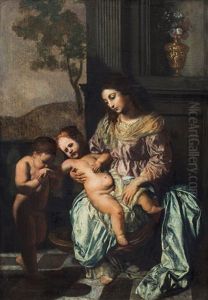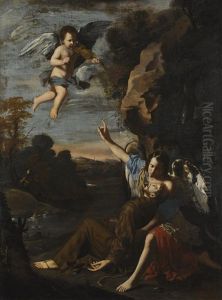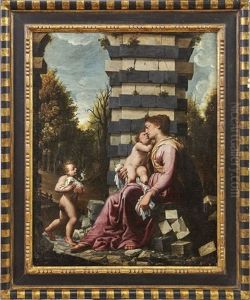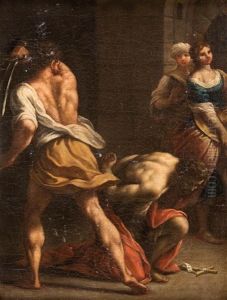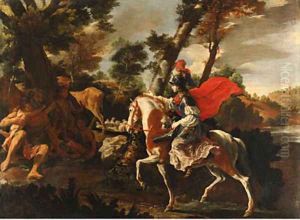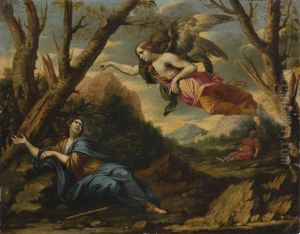Francesco Cozza Paintings
Francesco Cozza was an Italian painter of the Baroque period. Born in Stilo in the Calabria region of Italy in 1605, Cozza was one of the prominent artists of his time and often overshadowed by his contemporaries. He moved to Rome, which was the center of art and culture during the 17th century, and became a student of Domenichino, a well-known painter of the Bolognese School.
Cozza's style was heavily influenced by his mentor as well as by the works of Caravaggio, whose dramatic use of light and shadow was a significant movement in Baroque art. Cozza became known for his religious and mythological scenes, which were characterized by their dynamic compositions and emotional intensity. His paintings often depicted narratives with a strong sense of movement and were marked by their vivid colors and dramatic contrasts.
Throughout his career, Francesco Cozza received numerous commissions for altarpieces, frescoes, and other religious works. He worked for various churches in Rome, including San Lorenzo in Lucina, where he painted ‘The Assumption of the Virgin’ on the dome. His works can also be found in other parts of Italy and in collections worldwide.
Despite his talent, Cozza never achieved the fame of some of his contemporaries, such as Bernini or Borromini. His reputation was somewhat eclipsed during his lifetime and in the centuries that followed. Nonetheless, Cozza made a significant contribution to the Baroque period, and his works are appreciated for their emotional power and technical skill.
Cozza’s later years were not well documented, and he passed away in 1682. Today, art historians recognize Francesco Cozza as a skilled practitioner of Baroque painting, and his works are studied for their embodiment of the period's artistic ideals and for their own unique qualities.
